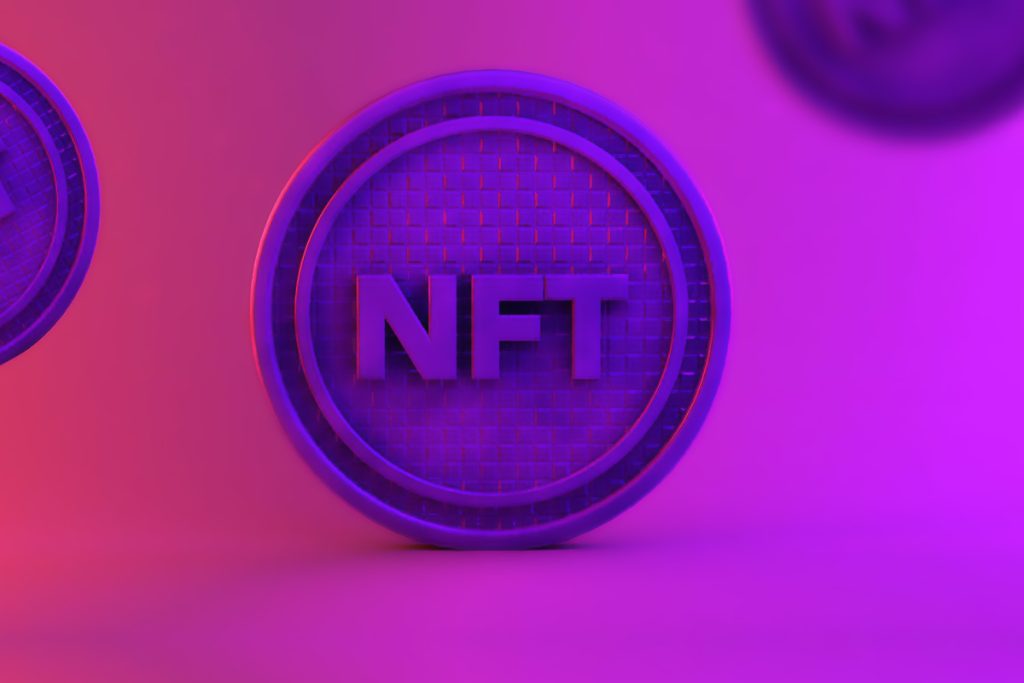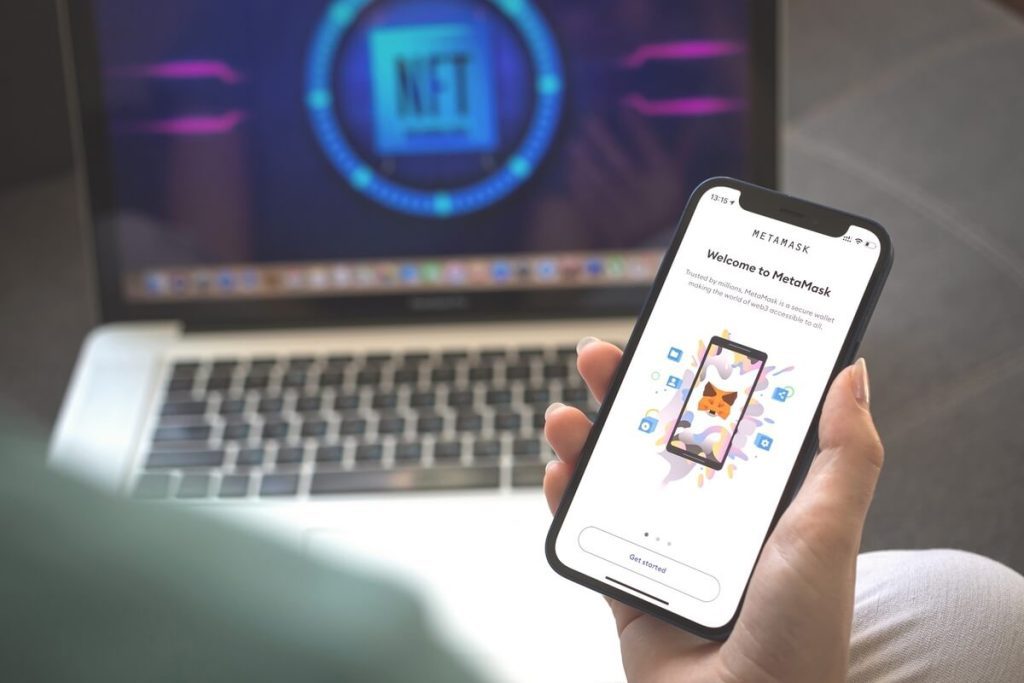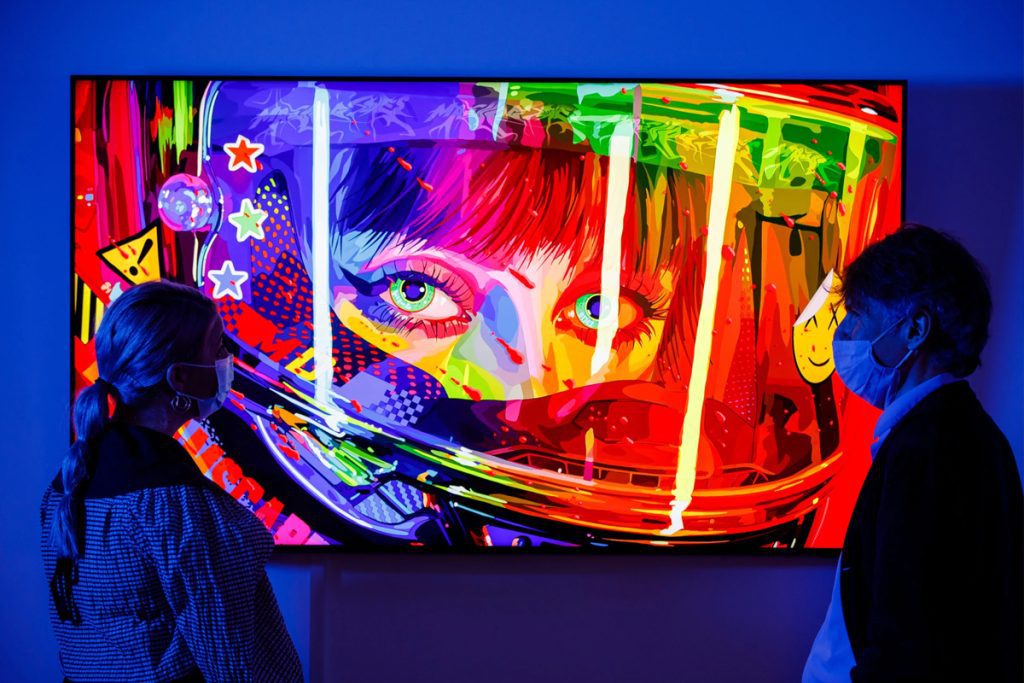The world of technology is growing immensely and we are always moving towards something better. While some technologies are becoming better day by day, we are also blessed with newer technologies every now and then. One of these new trends is NFT or most commonly known as non-fungible tokens. It is not a long time ago that die-hard technology fans were introduced to NFTs and their support and passion for it have made it grow beyond imagination. There are hundreds of NFTs produced all over the world and people are actively making money out of them.
It would not be wrong to say that NFTs have given birth to a whole new market and stream of earnings. There are dozens of mobile applications that help make, store, sell and buy NFTs. Similarly, we have NFT wallet apps that make the transaction of NFTs easier. If you are interested in developing such an app, we would say that there is nothing better than it. However, we have a few things lined up for you to know before you get your hands dirty with mobile application development.
What is NFT?
It is crucial for you to understand the basics of NFT in order to enter into this new realm. We understand that you are eager to start developing an NFT wallet right away and start earning, but have you ever thought about what NFT exactly is? What is the whole purpose of having NFTs? How did they appear on the scene and why are they gaining so much fame? If you have not thought about these questions before, we are glad to share that we have answers ready for you before you ask.

NFT is a type of cryptocurrency but a bit different from it. Where bitcoins, a sort of cryptocurrency, have coins that look the same, NFTs are entirely unique. They are used for digitally certifying physical and virtual assets’ property rights. Another unique property of NFTs is that they are non-fungible and non-interchangeable. NFTs are showcased digitally with a link on blockchain from where they can be sold by the owner. This is just a compact overview of NFTs but if you are interested to know more about them, we would encourage you to do so.
How to Create and Sell an NFT
The growing popularity of NFTs has convinced a lot of people to learn about making them. Since you are going to develop a wallet dedicated to NFTs, we have gathered some information to share with you regarding creating an NFT. While it might seem like a huge task, in reality, it is pretty simple and does not take a lot of time. Here are some steps you can follow to make an NFT:
- The first step for you to start working on creating your NFT is to finalize a platform of your choice. Some of the top NFT platforms include MOBOX, Bunicorn, Zookeeper, and Pulsar Farm.
- Since NFTs are digital assets, you are required to make an image, meme, painting, or GIF. NFTs are also unique, so come up with an idea that is unique. Once done, start developing it.
- Get ready to do some research for a perfect marketplace to host your NFT. You can either do a Google search or select from the famous options (Rarible, OpenSea, and Mintable).
- Depending on the market set up your NFT wallet to make transactions in the future.
- Upload your NFT on the marketplace commonly known as minting the NFT. This process will link your NFT with the blockchain so it becomes authorized under your name.
- Proceed to pay the minting fee to your chosen marketplace with the help of your NFT wallet.
- Set a sale process for your NFT and wait for someone to buy it.
Why Do You Need an NFT Wallet?
Since you are going to build an NFT wallet app, you must be aware of its market demand. If you don’t know why an NFT wallet is needed, you are not alone. While a lot of people are interested in making NFTs and earning through them, they know the least about NFT wallets. An NFT wallet is a new financial system that regulates all the transactions related to the buying and selling of NFTs.
One might argue that crypto-wallets can also be used for FNT’s transactions. However, crypto-wallets fail to support various asset classes, for example, artwork, entertainment videos, real estate, and lending contracts. NFT wallets make it easy just for anyone to hold, purchase, sell, and trade NFTs.
Types of Cryptocurrency Wallets
As NFTs are quite fresh in the market, one might have an impression that NFT wallets are not well-developed and up to par. On the contrary, NFT wallets show great results whether it is with their UI, customer experience, the technology used, or the speed of the whole transaction process. Here are some types of NFT wallets that are currently doing an amazing job in the market and are loved by users as well:
Custodial Wallet
Custodial wallets are the NFT wallets that have custody over the currency in the users’ wallets. Coinbase is a famous example of a custodial wallet that offers centralized exchanges operating in the USA. One may think about how these wallets operate. Whenever a purchase is made and the user decides to pay, the custodian wallet chosen to pay from holds the user’s crypto in its own custodial wallet and acts as a third party. It also takes ownership of the user’s private keys along with the currency.
They are seen as a convenient gateway into the crypto world by many of its users. All the user has to do is sign up for an account by giving his email address, verifying his identity, choosing a good password, and linking his credit card to start buying. Know that the demand and number of custodial wallets are increasing at a good speed.
Non-Custodial Wallet
Now that you know about custodial wallets, you might have some idea about non-custodial wallets as well. Non-custodial wallets are the ones that give full control to the user over his crypto. It does not involve any third parties and the private keys are neither shared nor accessed.
A lot of its users believe that it is the best, safest, and most secure bet. It is also thought to be a good option for the days when one has to pay a huge amount of crypto. However, the opponents say that it comes with a huge responsibility as one has to perform all the transactions himself.
How to Develop an NFT Wallet?
We believe you are equipped with all the necessary information you needs about NFT’s world. It is the perfect time for you to get started with building a mobile app meant to act as a wallet for NFTs. It might seem like a tough task but if you are already aware of the process of app development, you would be surprised to know developing an NFT wallet is not much different. Have a pen and paper ready as we dive into the process.

Choosing a Platform
Just like casual mobile app development, the first step for developing an NFT wallet is to decide the platform you are going to develop it on. By platform we mean, you need to decide the language to develop the app in. The most famous development languages available in the market are Android, Kotlin, Java, and Ruby.
While some of the languages allow you to develop apps that run on one platform, there are ways to develop applications that can help people using various platforms to use them. It is suggested that you built an app that is cross-platform. It will help you reach out to a larger group of audience and generate more revenue.
Study The Market
The second step you need to perform is to study the market you want to tap into. This research will help you realize the kind of application your users want, the features users require, the competitors you have, and the number of new businesses you need to beat. This information will help you shape your NFT wallet app in a better way.
One of the good ways to understand the needs of your users is by designing a survey and having it filled by a good number of people. It will reveal a lot of things to you that you might have not found by any other means. You can either the results to develop a full-fledged app or have features decided for different versions.
Deciding The Features
As discussed in the last point, you need to decide final features for your NFT wallet. There are a lot of NFT wallets in the market and no two of them are offering the same features. Every wallet tries to offer something new to its customers so it can have leverage over its competitors. The research done in the previous step should be enough to give you some ideas about the features you can include. In case you want to know about more features, here are some ideas for you:
Authorization
This is the most demanded feature of an NFT wallet. It helps a user to register on the app by filling in the form with the access keys of his wallet. You can require your user to either enter his email address or cell number to register. This feature will allow them to share as little information about them as possible for the sake of transaction privacy.
Better Security
It is not new that security is the feature everyone loves. Take the security of your NFT wallet app to another level by providing two-factor authentication. You can either send a code to the registered email address, cell number, or even Google Authenticator. Having secret questions set or asking for the cache are other popular means to ensure security.
Using QR Codes
Speed matters a lot in the time we are living. Make it easy and time-saving for your customers by allowing them to make transactions by scanning QR codes. Similarly, for accepting QR codes, have them generate QR codes that can be shared with the payee.
Notifications
It might seem like a very old feature, but trust us, customers still love notifications a lot. Notify your customers either on their selected channel or only on the app about new messages, payments received suspicious activity, withdrawals, updates, and others.
User-Friendly Interface
One can develop an NFT wallet that has all the amazing features a customer ever wanted and still fail to use it just because of the user interface. Your app must be designed with a simple and easy-to-use interface so, every journey of the user is smooth. If your user starts facing hindrances while using the app, know that they will quit you for some better alternative soon.
Designing The App
With all the research done and features decided, it is time for you to start sketching your app. You should start working on designing the user interface of your app. There are multiple app designing softwares that can be used at this step, but we would suggest you either use Adobe Illustrator or Mock It. Both of these platforms are easy for even first-time users and have dozens of beautiful tools. You can use these tools and get hang of the software within a few hours.

You might have to go back and change a few features of the app. This requires you to ensure that whatever platform you decide, on is easy to run and does not take a lot of time to compile the final result. The right platform will help you save time and effort.
Choosing Technology
While every step is important in developing an NFT wallet app, this step needs some extra attention. It requires you to choose a technology stack to build your app on hence, has the power to decide the future of the app as well. You can do research to decide on a technology stack yourself, however, we have some suggestions to drop as well.
It is suggested that you use Ethereum, or Binance Smart Chain as the blockchain base, Ethereum Virtual Machine, or BSC Virtual Machine for smart contracts, PHP, Codeigniter, or Laravel for the development of the website, and AWS or MS Azure for cloud hosting. Similarly, you can consider Amazon SNS and Twilio for notifications, Redis and MySQL for database, and Phantom-JS for other features.
Start The Coding
With a technology stack decided, you must start developing your app. It is suggested that you build your app in smaller chunks and keep pushing these chunks into the market for your users. Divide all the features you want to build into smaller groups. Develop only the crucial or basic features for launching the app. This will save you manpower, time, and efficiency as well.
Testing
You must keep testing your app every time you think you are ready to launch it in the market. You should have your app launched at a beta version for some of the users to operate and test. Their feedback will provide you with valuable insights that a developer would never be able to give. You should also form a team of quality assurance professionals who can test the app in various scenarios and test it. They are people trained to find loopholes that you would take years to discover on your own. Make changes that are required urgently and push other changes for revision to create a new version.
Launch And Improvement
One mistake made by a lot of developers is launching the app fully developed. It is highly suggested that you develop the crucial features of your app and launch it in the market as soon as possible. The users will test all the features of the app built and keep providing their valuable feedback. Doing so will ensure that you don’t get late in entering the market, get continuous feedback from your clients and have the time and energy to develop the feedback to push newer versions in the market. It is always a wiser decision to have some features fail and redo them rather than having a fully developed app fail.
Conclusion
No doubt, NFTs have become a huge part of our lives. NFT wallets make one stream that has been opened for people to enter the market and generate revenue. Knowing about just NFTS is not enough as there are a lot of things one might need to understand to develop an NFT wallet. We have shared a few steps for you to develop an NFT wallet yourself. On a side note, you can always take inspiration from financial apps like Metamask, Coinbase Wallet, Donaco, and Amazon Wallet. These apps will help you understand the world of wallet apps more so you can launch a groundbreaking app.